Review of raspberry diseases and pests

Raspberries have been grown in Russia for a very long time. Therefore, experienced gardeners and gardeners know well how to deal with various diseases and pests that affect this plant.
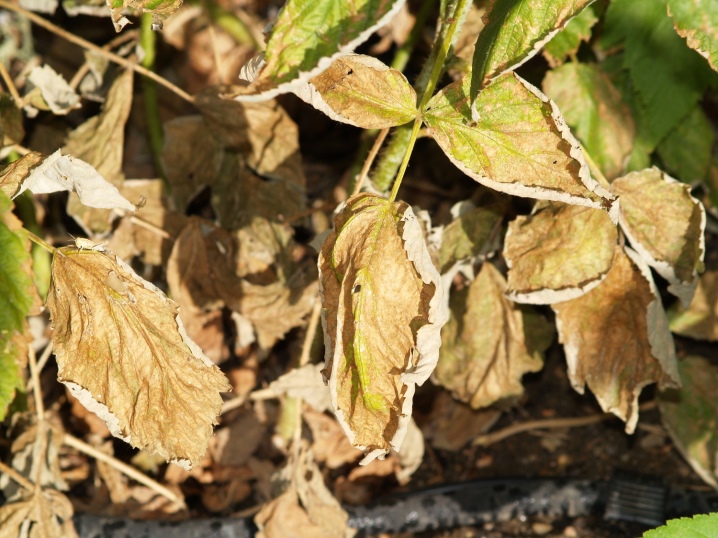
Overview of fungal diseases
Most often, raspberries suffer from fungal diseases. They are dangerous for both young plants and adults.
Anthracnose
This is one of the most common raspberry diseases. Anthracnose attacks plants very quickly. The leaves begin to suffer first. Round spots of gray-purple color appear on them. In the future, the foliage begins to curl, dry out and fall off. Raspberry bark turns gray and cracks. If the disease affects the bush during fruiting, it dries along with the berries.
It is impossible to treat a diseased plant. It is simply removed and destroyed.
In order to prevent raspberry infestation, it is worth choosing resistant varieties for planting on your site. In spring, plants can be additionally treated with a solution of copper sulfate. You can plant mustard, onion, garlic or calendula next to the raspberry.
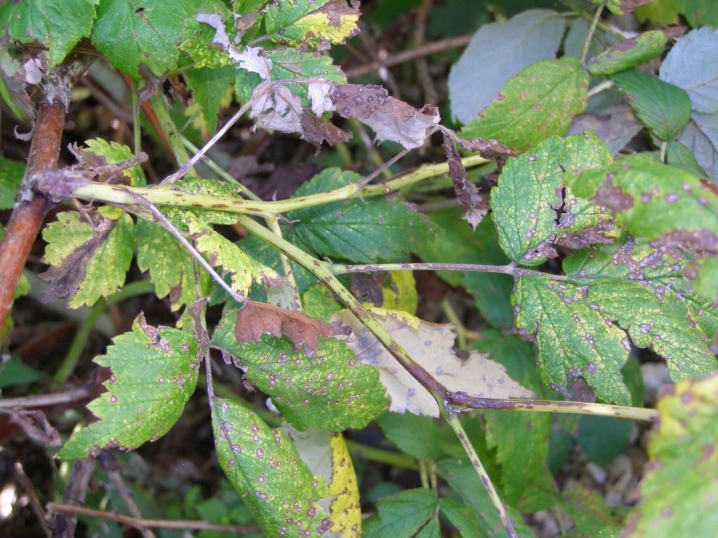
Purple spot
This disease is also called didimella. It affects the greens and the trunk of the raspberry. It is very easy to determine the signs of a disease in bushes. Purple spots appear on the stems and foliage, which become darker over time. The disease progresses very quickly, so infected bushes must be destroyed immediately. Purple spot, like many other diseases, is not cured.
To keep the raspberry plant healthy, it is recommended to plant the seedlings in the soil in dry weather. Plants in the spring need to be treated with Bordeaux liquid. After flowering, you can spray the area with fungicides.
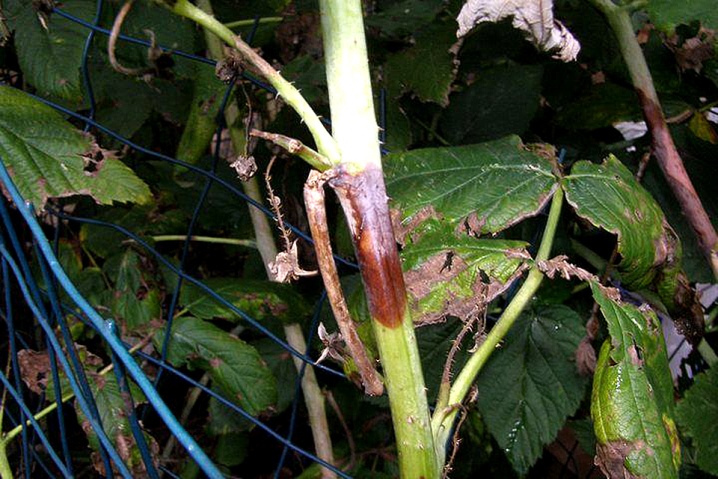
Gray rot
This disease very quickly leads to the death of raspberries. Gray spots appear on foliage and berries. Brown rings can be seen on the shoots. The disease most often affects the bushes during fruiting. High humidity contributes to the rapid spread of the disease.
It is impossible to save diseased plants. No treatment for the hives works. Therefore, diseased specimens must be removed along with all plant debris.
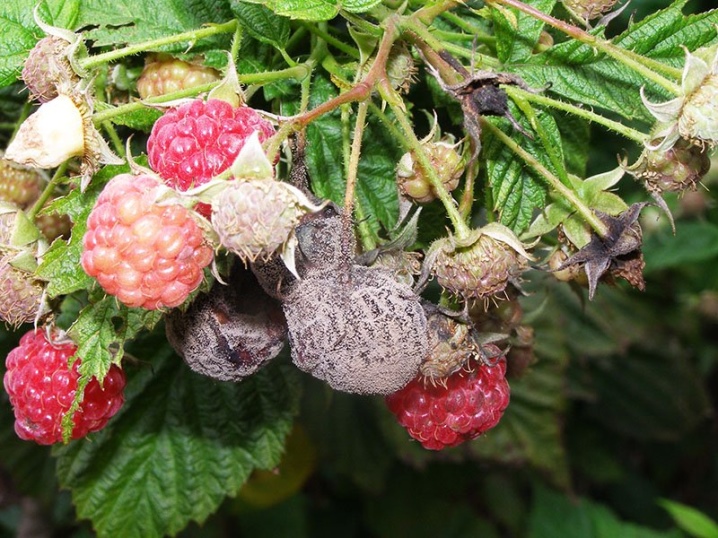
Powdery mildew
This disease affects raspberries very quickly. A light bloom appears on foliage and berries. It can be white or gray. The appearance of the plaque resembles dust or flour. The plaque becomes denser over time. Knowing this description, you can save the plants in a timely manner. To do this, all infected parts of the bushes are cut off and burned. The top layer of the earth is removed, and then sprinkled with ash.
If this is not done, the infected bush will die, and the disease will spread further.
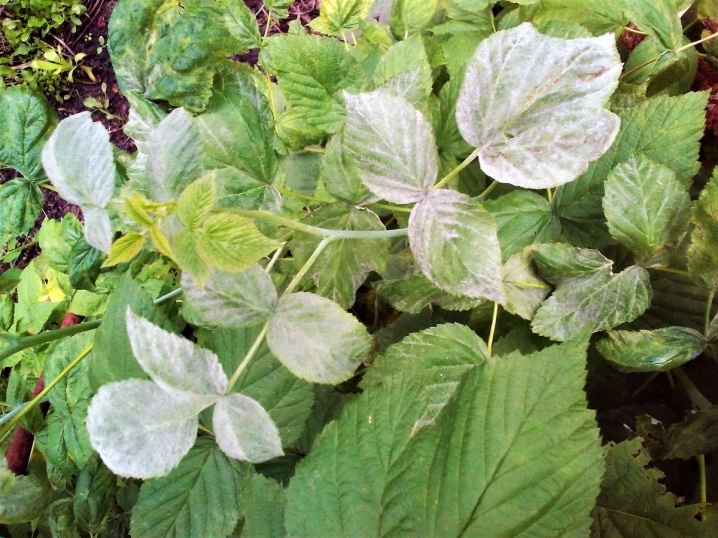
Ulcerative spot
Most often, ulcerative spotting affects old raspberry bushes. Dark brown spots appear on the stems, which grow very quickly. Subsequently, deep cracks also form on the crust.
It is impossible to fight ulcerative spotting. Diseased shoots must be cut and burned.

White spot
This disease is dangerous for both regular and remontant raspberries. Round spots appear on the foliage of ailing plants. Over time, the bark begins to crack. As a rule, the disease affects raspberries in June. It develops in conditions of high humidity.
To prevent the spread of the disease, plants with signs of white spot must be destroyed. In spring and autumn, the site must be treated with Bordeaux liquid.
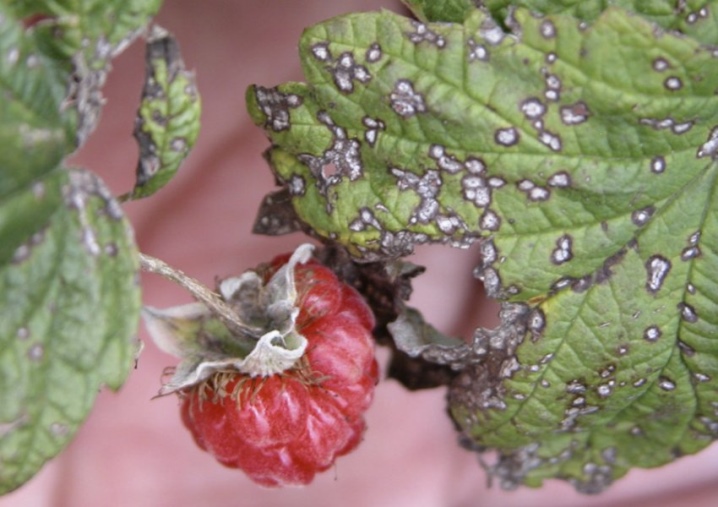
Verticillary wilting
This disease usually affects young, annual shoots. The foliage of ailing raspberries turns pale at first, and then turns yellow. Dark spots appear on the shoots. The bark cracks on them. This disease develops most often in hot summer.
It is impossible to treat garden raspberries. Diseased plants must be destroyed immediately. In the spring, it is recommended to treat raspberries with Fitosporin.
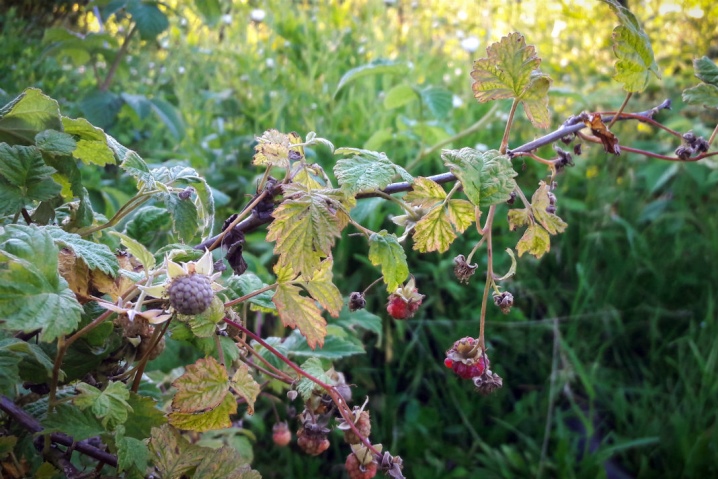
Rust
This disease affects foliage. Volumetric spots of yellow-orange color appear on it. Over time, the disease leads to wilting of the stems.
For prevention, plants are treated with copper sulfate in the spring. If the raspberries have already been infected with rust, the bushes will have to be destroyed.
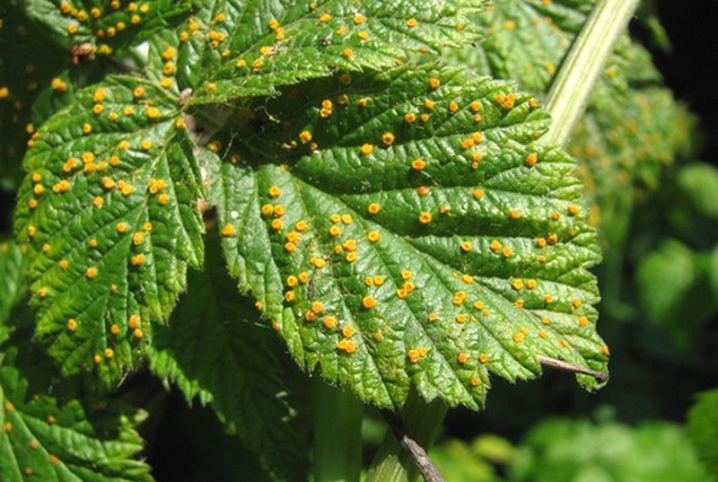
Viral diseases
Diseases caused by viruses also pose a serious threat to the raspberry tree. There are several major diseases that gardeners should pay attention to.
- Witch's broom. A large number of thin and weak shoots appear on the infected bush. They stop bearing fruit. The disease is usually not cured. Bushes are simply destroyed. In the process, it is also important to eliminate pests that can carry it.
- Curliness. This disease causes the foliage to turn yellow. Over time, it becomes dry and brittle. If the plant was infected during fruiting, the fruit will be deformed and tasteless. To combat the disease, the bushes must be destroyed. In their place, it is worth planting healthy seedlings.
- Mosaic. This disease usually affects bushes during the flowering period or immediately after it ends. After infection, the shoots slow down their growth and become weak. It is impossible to fight this viral disease. The bushes can only be eliminated.
If the raspberry tree was seriously affected by one of the viral diseases, after the destruction of the bushes, new ones should not be planted in their place. The site needs to be given a "rest".
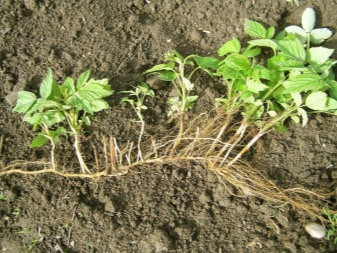
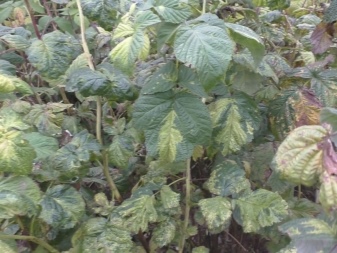
Bacterial diseases
This group of diseases is also quite common. There are two types of cancer that are most dangerous to raspberries.
- The first one is the root one. As a result of the disease, raspberry roots begin to rot. Such a disease can manifest itself at any stage of the development of the bushes. Plants become weak. Therefore, it is much more difficult for them to survive the heat or extreme cold. In order to prevent the development of this disease, for planting it is worth choosing seedlings with strong and healthy roots. Before planting in the soil, they can be treated with copper sulfate.
- The second type of cancer is called stem cancer. After infection of the plant with this disease, comb-shaped tumors appear on the surface of the trunk. White growths become dark over time and also harden. The buds of an infected plant die off. Because of this, it ceases to bear fruit. It is also impossible to cure the plant. It only remains to burn it.
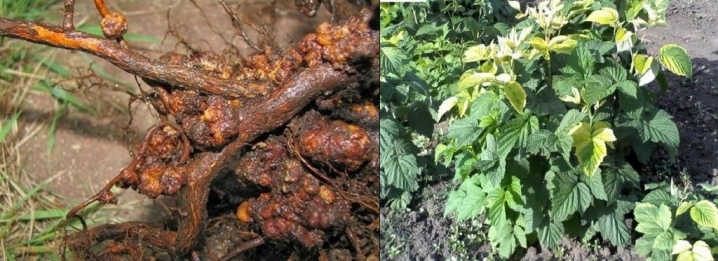
Pest control
Various pests are also dangerous for raspberries.
Raspberry mite
These insects are very small in size. They live in leaf tissues. The affected foliage is covered with bulges. Leaf veins deform over time. Then the foliage dries up and falls off. For pest control, you can use drugs such as "Fufanon" or "Kemif".
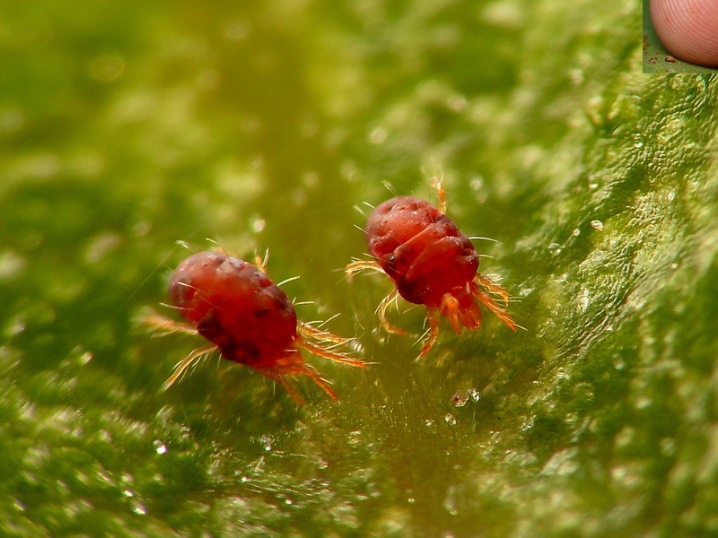
Spider mite
The size of this pest is also very small. Ticks can be greenish, yellow, or orange. Spider mites also actively damage foliage. Over time, it begins to turn yellow, deform and dry out. On the branches of plants, you can also notice a dense cobweb, the number of which is increasing every day.
For pest control, plants are recommended to be treated with Fitoverm. To completely destroy the spider mite, the bushes will have to be sprayed 2-3 times.
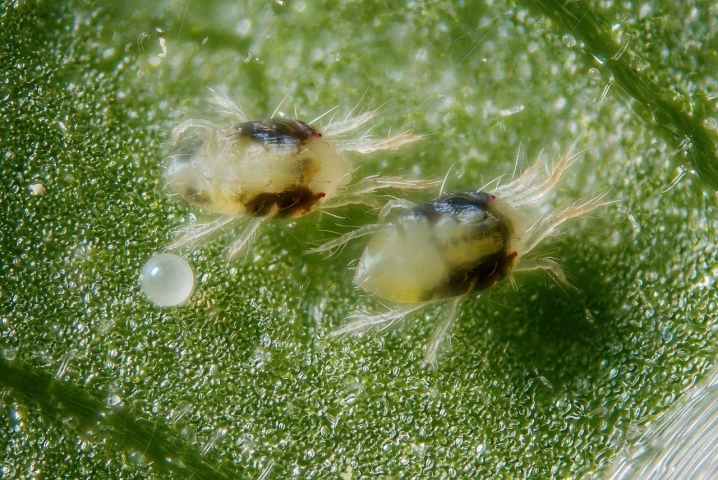
Weevil
This pest is also called the raspberry flower beetle. Adult weevils are black. The larvae of these pests are grayish white. Weevils actively gnaw at the foliage, thus weakening the plants. Noticing leaves in small holes, you need to start fighting these pests. Strong insecticides are used for this purpose.
Spraying is best done in the evening or early morning.
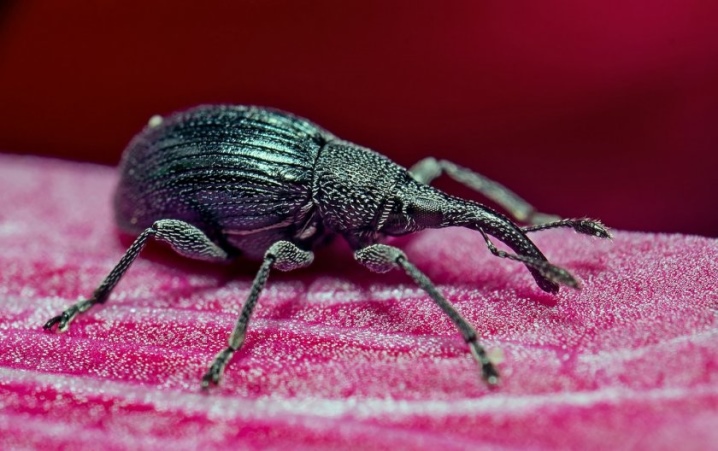
Flea
The raspberry flea most often attacks plants in July. She eats the foliage, leaving small holes in it. The flea is harmful not only to raspberries, but also to honeysuckle. Strong insecticides are used to combat it.
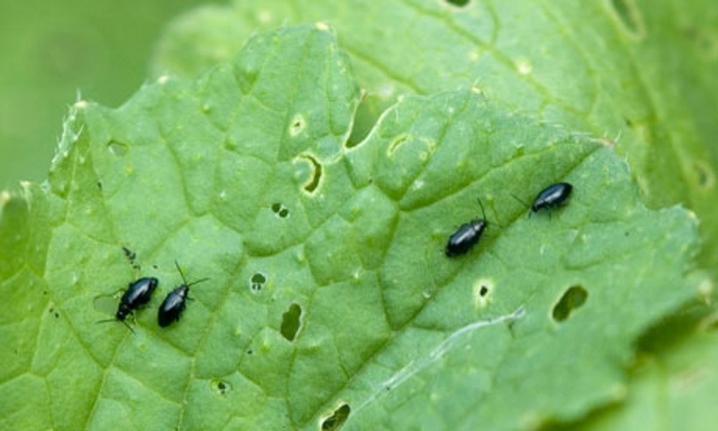
Sawfly
It is a small insect with transparent wings and a light green body. The danger to raspberries is represented by sawfly larvae. They gnaw through the foliage of the raspberry. It is quite difficult to notice them, because they prefer to hide on the inside of the leaves.
In order to prevent the spread of pests, the area should be sprayed with "Fufanon" or other similar means in the spring. Re-processing will need to be carried out in the summer.
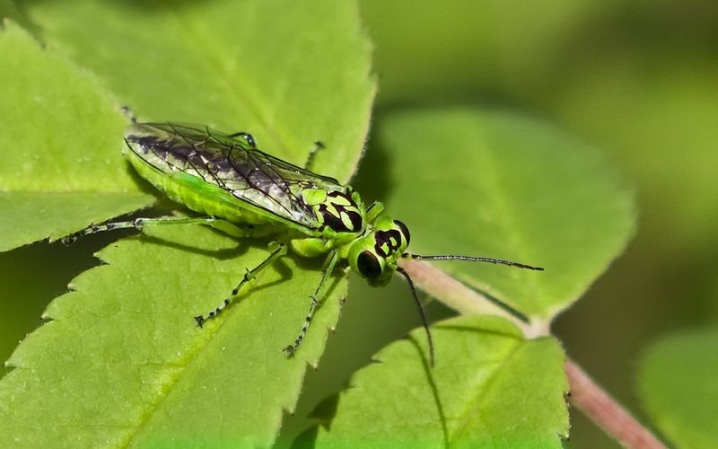
Raspberry fly
Insects are brownish-gray in color. They appear on the site in late spring. Flies feed on the nectar of flowers, and their larvae actively gnaw shoots. If pests take a fancy to the site, they can destroy 70-80% of the raspberry tree. You can also use Fufanon to fight raspberry flies.
Gardeners who like to use only folk remedies on their site can treat raspberries with a solution based on laundry soap.

Moth
The raspberry moth is small in size. The wings of the pests are thin and covered with fine hairs. The caterpillars are yellow. They actively damage foliage. To combat pests, the site is treated with "Fufanon" before flowering.
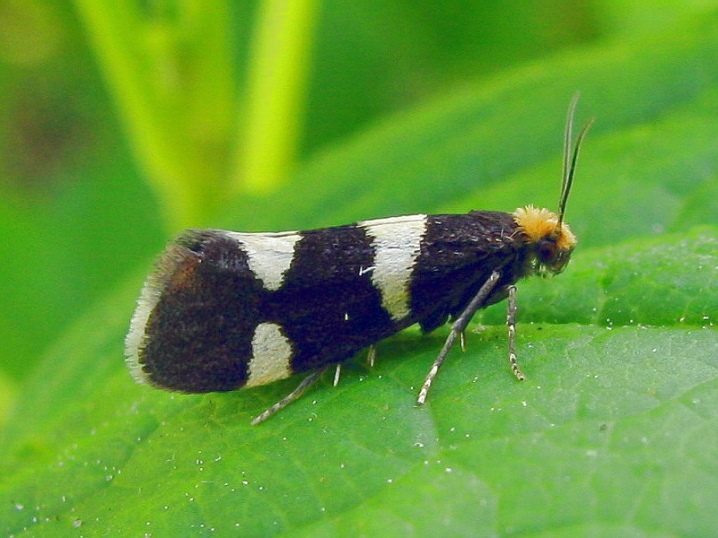
Smoky moth
The wings of these dark butterflies are decorated with diamond-shaped spots and yellow stripes. The caterpillars are also dark brown in color. Smoky moths are nocturnal. Young caterpillars damage foliage very quickly. This is very bad for the condition of the plants. Any suitable insecticide can be used to control pests.
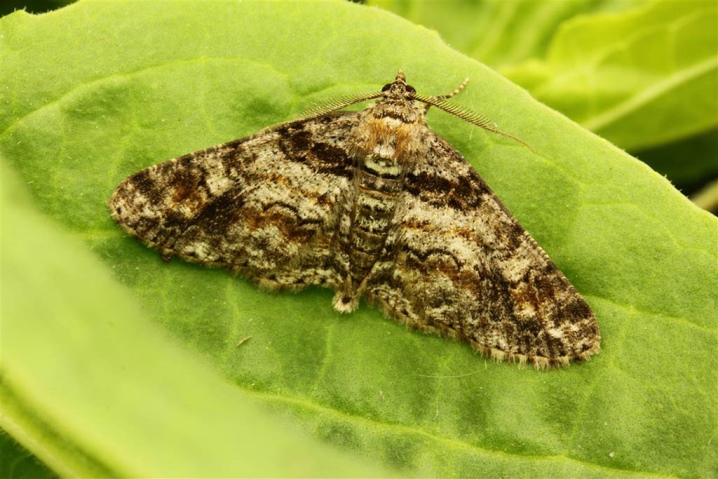
Scoop
An earthen (or gray) scoop can also settle in a raspberry tree. Butterflies are large in size. Their wings are grayish blue. The caterpillars of the scoop are large and dark. They have four white growths on their backs. It is worth expecting the appearance of these pests on your site in May. Caterpillars destroy raspberry leaves very quickly. You can protect the bushes from pests by treating them in the spring with "Fufanon".
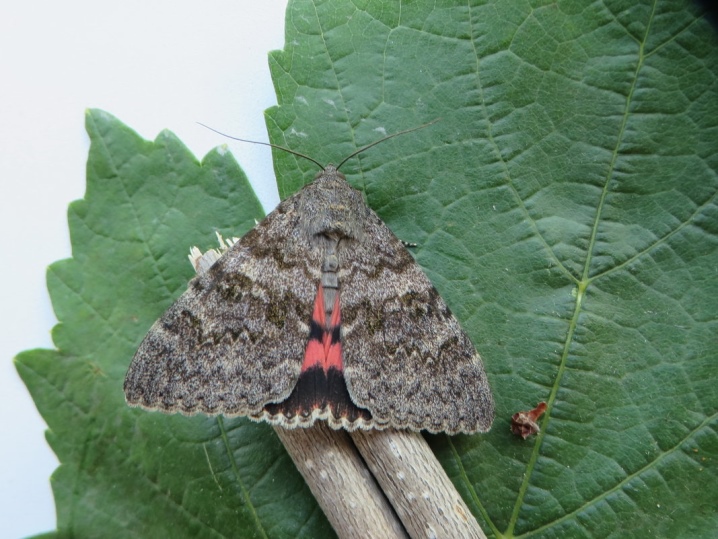
Raspberry beetle
Adult beetles are black or reddish. They actively damage raspberry flowers and leaves. If a beetle settles in the raspberry, the berries growing there will be wormy. They are home to yellowish caterpillars.
To protect the bushes from pests, they are treated with infusions of plants with a pungent aroma. Baking soda can also be used to combat. To prepare a solution based on it, a tablespoon of the product must be extinguished with boiling water, and then diluted in a liter of water.
If there are not very many beetles on the site, they can be collected by hand. It is recommended to pre-process the harvested berries from worms before use. Usually they are simply placed in a container of water for a couple of minutes.

Walnut
Small butterflies with transparent wings covered with black spots can often be seen in raspberry areas. They pose a great danger to bushes. After the attack of these pests, voluminous growths appear on the foliage. Over time, the leaves dry out and fall off.
It is best to use high-quality insecticides to combat the nutcracker. Suitable for processing plants and infusion of tobacco dust, dandelion or onion husks.
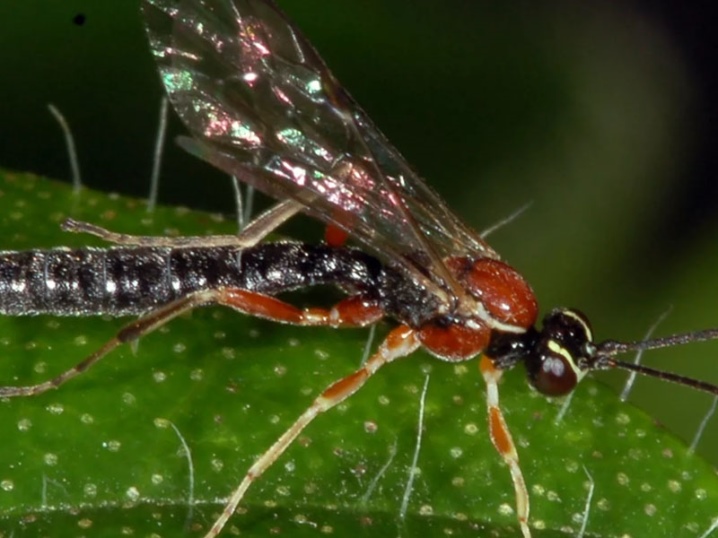
Prevention measures
To protect the raspberry tree from pests and diseases, it is important to adhere to the following preventive measures.
- Prune young plants regularly. Sanitary pruning can help your bushes grow faster and make them healthier.Plantings should also be thinned regularly.
- Treat the raspberry with protective equipment. To protect the bushes from diseases, it is recommended to spray them with copper sulfate or other similar means in the spring.
- Clean the area after harvesting. All plant waste is recommended to be disposed of immediately.
- Dig up the site in the fall. This allows you to get rid of pests that hibernate in the soil.
- Water and feed the bushes regularly. You can fertilize the bushes with both complex dressings and folk remedies, for example, boric acid. It is also advisable to get rid of ants in a timely manner. Especially if they are next to the raspberry tree.
The area with bushes is worth checking regularly. In this case, it will be very easy to notice signs of disease or small pests.
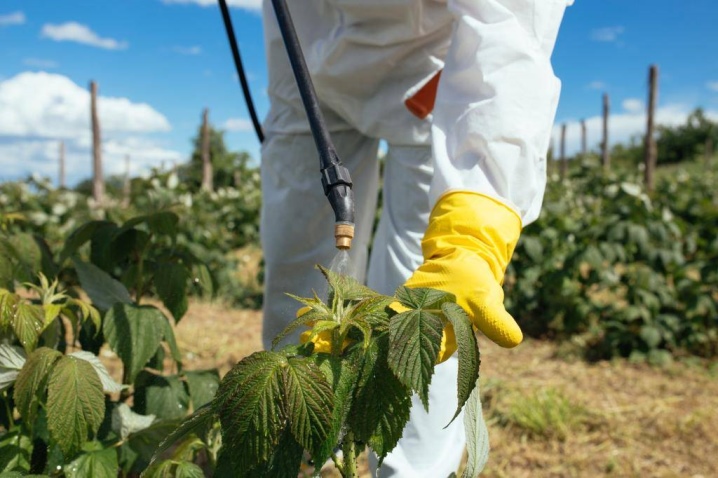
Resistant varieties
Unfortunately, there are no raspberry varieties that are completely resistant to all diseases. But breeders managed to breed several strong varieties of bushes.
- "Apricot". This raspberry grows well in the central regions. It bears fruit since the beginning of August. The berries growing on the bushes are large in size and have a sweet and sour taste.
- "Shiny". This type of raspberry is resistant to the most common diseases and pests. Bushes can be planted in most regions of Russia.
- The Yellow Giant. Such raspberries are very rarely affected by diseases or pests. The plant will thrive in cold regions.
- "Meteor". This raspberry is resistant to most fungal diseases. The variety is early. The berries of this raspberry are very tasty and sweet.
All young plants must be healthy. It is recommended to buy them from trusted suppliers.
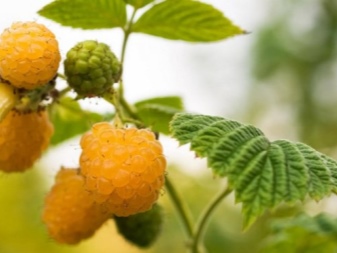
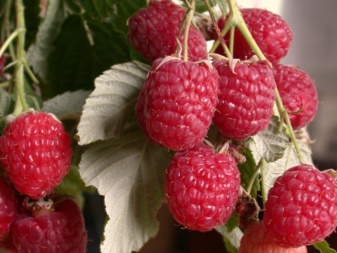
Summing up, we can say that it is not easy to deal with pests and diseases of raspberries. But the result is definitely worth it, because healthy plants delight the owners of the site with an excellent harvest.













The comment was sent successfully.